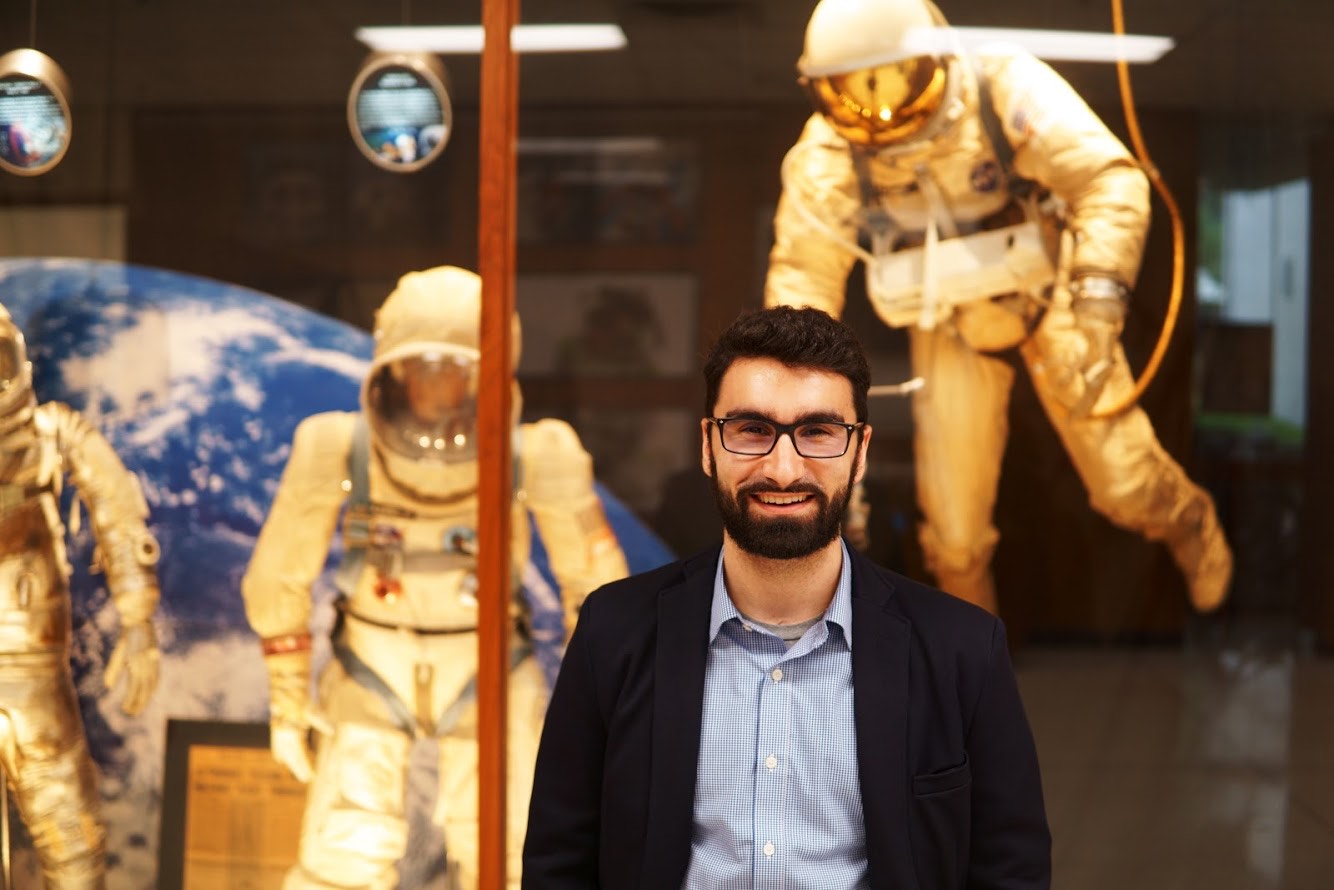When Simon Ozbek (MS '20, Human Factors & Ergonomics) started his academic career he never could have imagined that it would take him all the way to NASA. Determined to unite his passions for psychology and creativity, he discovered the College of Design’s Human Factors & Ergonomics graduate program. Now a human factors engineer at NASA, Ozbek describes his journey into the field in the following interview.

How would you describe the field of human factors and ergonomics (HFE) for those who are unfamiliar with it?
I describe HFE as the study of how people interact with systems, products, and technology. Because of its broad scope, the domain of what can be considered HFE is quite large. The general role of an HFE practitioner is to incorporate the user in the development processWe are commonly described as being the ‘voice of the user’ or a ‘champion for the user’ in the development process. By involving the users’ input we can better ensure a product that will satisfy their needs.
What drew you to the Human Factors and Ergonomics program at the U?
Diversity! HFE is the combination of three general domains of knowledge: psychology, design, and engineering. This is because you’re dealing with people (psychology) as well as systems, products, and technology (design/engineering).
Depending on the industry and a company’s culture, one of these three domains may be favored over others. As such, I felt inclined to obtain a wide breadth of knowledge and skills in each domain. The program at the U gives you that flexibility and allows students to tailor classes around their interests. You can choose to focus on a specific domain, or stay general and gain a variety of knowledge.
What does your job entail as a human factors engineer at NASA?
I am part of the Habitability & Human Factors Branch (referred to as the SF3 branch) at NASA Johnson Space Center (JSC), which promotes a Human System Integration (HSI) approach. Our function is to use analysis and modeling of human performance and interaction with complex systems to improve safety, efficiency, and mission success.
In my primary project my role focuses on ensuring that human factors requirements are met. I do this by first understanding how a system works and determining how astronauts will interact with subsystems such as communication, environmental control, life support and more. I then identify potential errors that could lead to a catastrophic event – a loss of life and crew or loss of a vehicle. Then I help to redesign the subsystem in a way that will reduce or eliminate errors.
What has been your favorite project to work on at NASA?
Part of NASA’s recently announced Artemis program—a plan to return to the moon by 2024—is the construction of the Lunar Gateway. This space station will not only orbit the moon to provide strong communication with Earth, orbital adjustments, and landing assistance, but it will also help us prepare for future missions, such as our mission to Mars. My favorite project is easily one of the two modules that will make up the station, a spacecraft called HALO. I mean, I get to work on a spacecraft that will actually orbit the moon with astronauts working and living inside it! How crazy is that? Each day, I get to apply what I have learned from school and experience. For example, I get to participate in human subject testing with astronauts who provide valuable feedback on the design of the system. Everyone on my team is so driven and excited about what we are doing. I can’t wait to one day look up and see HALO orbiting the moon and say, “I helped build that.”
What advice do you have for students interested in applying to HFE?
My advice is to just start. Whether it is starting the application process for the HFE program, or asking for an informational interview with one of the HFE professors, just start. I never thought I would be where I am today, and I definitely didn’t have all the answers, but looking back, one of the best decisions I made was to start.
A breakthrough invention in wearable technology has the potential to change how we interact with the clothes we wear every day.
When Professor Emeritus Karen LaBat (Apparel Design) met medical doctor Karen Ryan (M.S. ’06, Apparel Studies) in 2002, they found that they shared a passion for improving the design of wearable products so that all people can enjoy safe, fully functional, and innovative products.
According to the Centers for Disease Control and Prevention, 1 in 68 children in the United States has autism spectrum disorder. This spring, Professor Abimbola Asojo and Instructor Tina Patel's sophomore interior design studio worked with local design firm Perkins + Will and autism service provider Fraser to learn more about designing for those on the autism spectrum.





